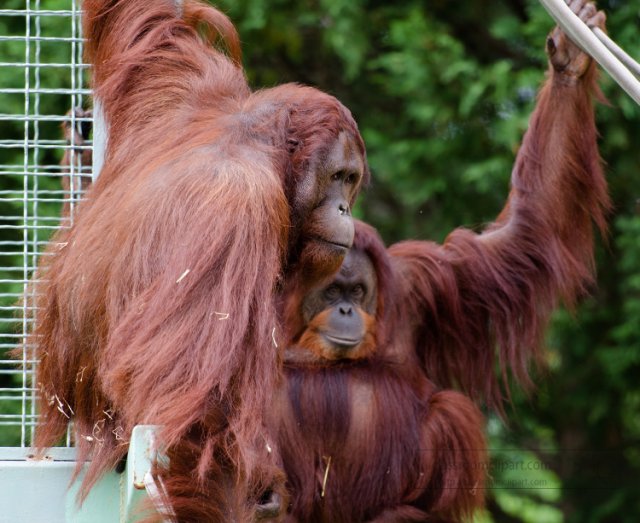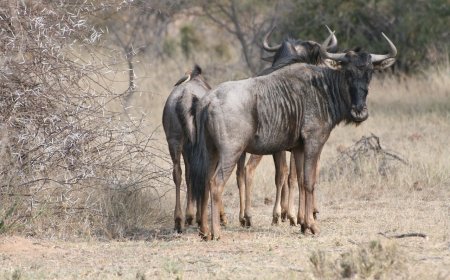All About Orangutans for Students: Forest Giants of Intelligence and Grace
Discover the world of orangutans in this student-friendly article. Learn about their intelligence, forest life, behavior, and conservation. Includes vocabulary, quiz, and a kid-friendly summary!

🧠🦧 Orangutans: Forest Giants of Intelligence and Grace
Orangutans are among the most intelligent animals on Earth, and the only great apes found in Asia. With their long reddish-orange hair, strong arms, and thoughtful eyes, these peaceful primates spend their lives in the trees of tropical rainforests. The word “orangutan” means “person of the forest” in Malay, and it’s a name that fits them well.
Orangutans are known for their gentle personalities, slow movements, and incredible smarts. They make tools, use leaves as umbrellas, and remember where fruit trees grow year after year. Sadly, orangutans are critically endangered, mostly because their forest homes are being destroyed.
🌍 Habitat and Geographic Range
Orangutans live only in the rainforests of Borneo and Sumatra, two islands in Southeast Asia. These forests are hot, humid, and filled with thick trees—perfect for animals that spend most of their lives in the treetops.
There are three species of orangutan:
- Bornean orangutan (Pongo pygmaeus)
- Sumatran orangutan (Pongo abelii)
- Tapanuli orangutan (Pongo tapanuliensis) – the rarest of all great apes, found only in a small part of Sumatra
Orangutans are arboreal, meaning they live in the trees. They swing and climb using their long arms and strong hands and feet. They build a new nest each night, bending branches and layering leaves to create a bed high above the forest floor, safe from predators.
🌿 Diet and Feeding Behavior
Orangutans are omnivores, but their diet is mostly plant-based. They eat more than 300 kinds of food, including:
- Fruits (especially figs and durians)
- Leaves, bark, and flowers
- Insects and bird eggs
- Occasionally soil or minerals for nutrients
They use tools to help them eat—like sticks to scoop honey or open fruit, or leaves to hold water and shade themselves from the rain.
Orangutans spend 6 to 8 hours a day feeding and travel long distances through the forest to find ripe fruit. Because fruit trees bloom only at certain times, orangutans have amazing memories to help them remember which trees to visit and when.
👥 Behavior and Social Life
Unlike other great apes like chimpanzees and gorillas, orangutans are mostly solitary. Adult males live alone, and females live with their young. Still, orangutans sometimes meet up to eat, play, or mate, especially in areas with abundant fruit.
Each orangutan has a home range—an area of forest it knows well and travels through often. They avoid fighting by respecting each other’s space and using vocal calls, especially by males.
Male orangutans develop large cheek pads (flanges) and a throat pouch, which they use to make long booming calls that echo across the forest. These calls help them:
- Announce their presence
- Keep other males away
- Attract females
Young orangutans stay with their mothers for 6–8 years, the longest childhood of any mammal except humans. During that time, they learn everything they need to survive by watching and copying their mother.
🍼 Life Cycle and Reproduction
Orangutans grow slowly and live long lives. Females give birth only once every 7 to 9 years, making them one of the slowest-reproducing animals on Earth.
- Pregnancy lasts about 8.5 months
- A single baby is born, weighing around 3–4 pounds
- The infant clings to its mother’s belly and later rides on her back
- By age 2, it starts climbing and playing in trees
- By age 6–8, it becomes independent, though it may stay nearby for a while
Orangutans can live up to 50 years in the wild and even longer in captivity. Because they reproduce slowly, their populations are especially vulnerable to extinction.
🧠 Intelligence and Tool Use
Orangutans are one of the smartest animals in the world. In the wild, they:
- Use sticks to fish for termites or honey
- Make umbrellas from leaves
- Weave bedding and cover for their nests
- Learn from each other and pass down traditions—this is a form of culture
In zoos and sanctuaries, orangutans have been seen using keys, building structures, and solving complex puzzles. They understand cause and effect, recognize themselves in mirrors, and have even been taught to use sign language or picture symbols to communicate.
These apes show emotion, problem-solving skills, and the ability to plan ahead—making them some of the most intelligent non-human animals alive today.
⚠️ Threats and Conservation
Orangutans are critically endangered, with all three species facing serious risks. There are fewer than:
- 104,000 Bornean orangutans
- 14,000 Sumatran orangutans
- 800 Tapanuli orangutans (latest data)
🚨 Major threats:
- Deforestation, especially from palm oil plantations and illegal logging
- Habitat fragmentation, which separates groups and reduces mating
- Illegal pet trade—babies are captured after their mothers are killed
- Forest fires, sometimes set by humans to clear land
- Climate change, which alters their rainforest ecosystems
🛡️ Conservation actions:
- Protecting rainforests and stopping illegal logging
- Creating wildlife corridors so orangutans can move safely between forests
- Rescue and rehabilitation centers for orphaned or injured orangutans
- Public education to reduce palm oil use and support eco-friendly products
- Supporting organizations like the Orangutan Foundation and Borneo Orangutan Survival Foundation
🎉 Fun Facts About Orangutans
- Orangutans share 97% of our DNA
- Their arms can stretch over 7 feet wide from fingertip to fingertip
- A baby orangutan may stay with its mother for up to 8 years
- They build a new nest every night, often 40–60 feet above ground
- Orangutans have been seen using leaves as gloves to handle prickly fruits
🧠 Vocabulary List
- Arboreal – Living in trees
- Omnivore – An animal that eats both plants and animals
- Nest – A bed or shelter made by an animal to rest or sleep
- Tool use – Using objects to complete a task
- Solitary – Preferring to live alone
- Flanges – Large cheek pads on adult male orangutans
- Habitat fragmentation – Breaking up an animal’s living space into smaller areas
- Culture – Learned behaviors passed from one generation to the next
- Critically endangered – In danger of disappearing forever
- Rehabilitation – Helping animals recover and return to the wild
🧒 Kid-Friendly Summary
Orangutans are big, smart apes that live in the rainforests of Asia. They spend most of their time in the trees, swinging and climbing with their long arms. They eat mostly fruit, build nests, and even use tools!
Baby orangutans live with their moms for many years while they learn how to survive. Sadly, orangutans are in danger because people are cutting down forests. But many groups are working hard to protect these amazing animals and their homes.



















































